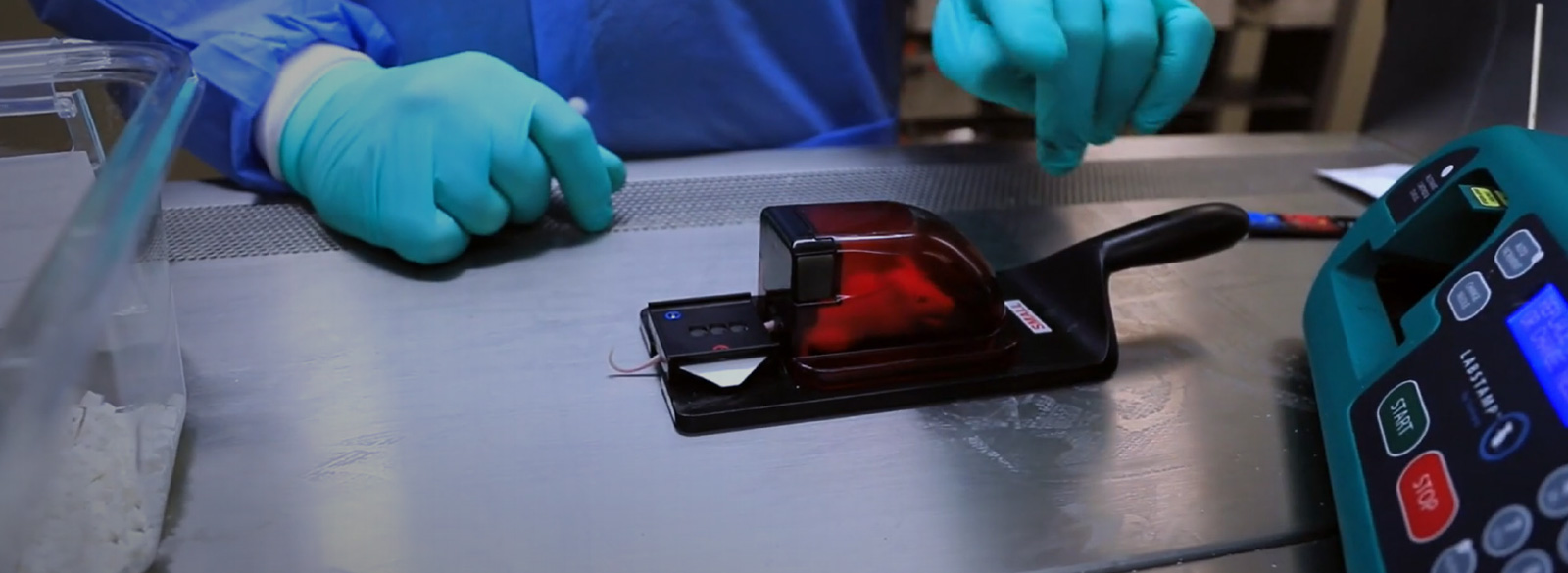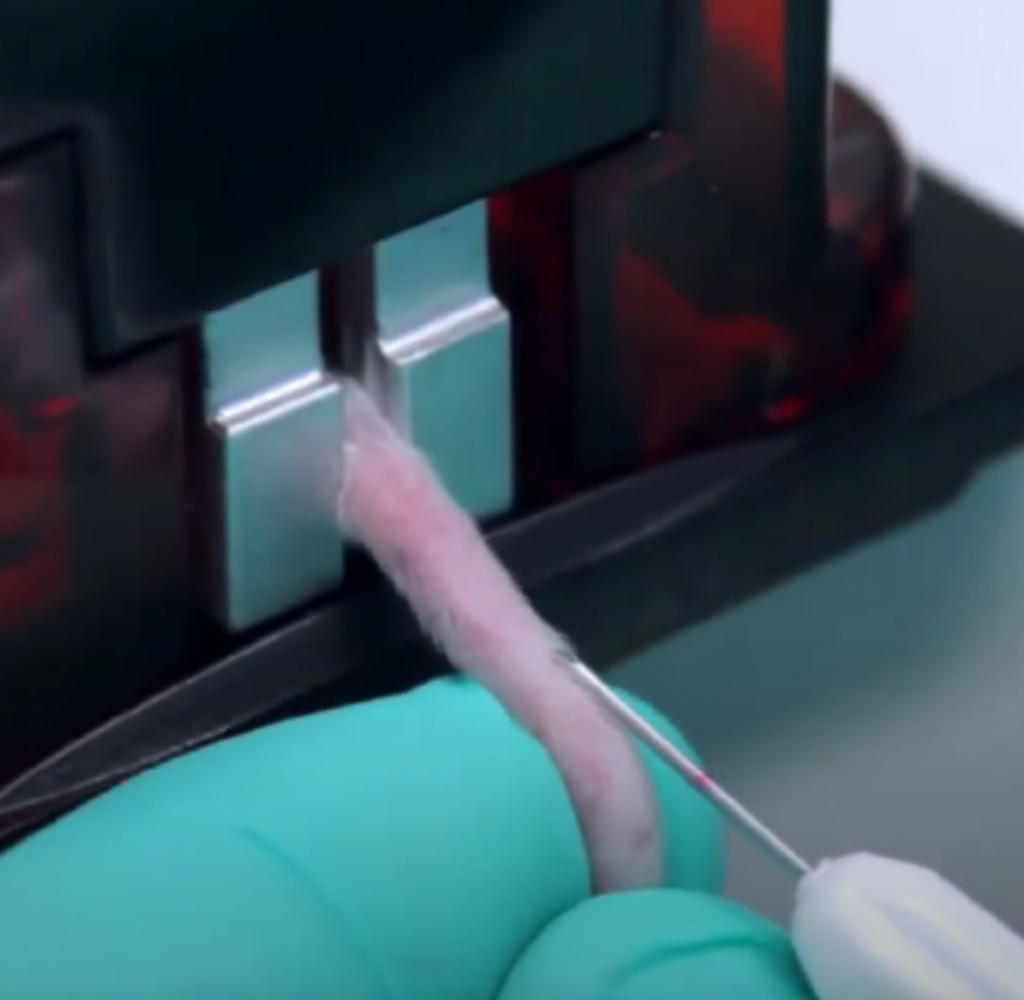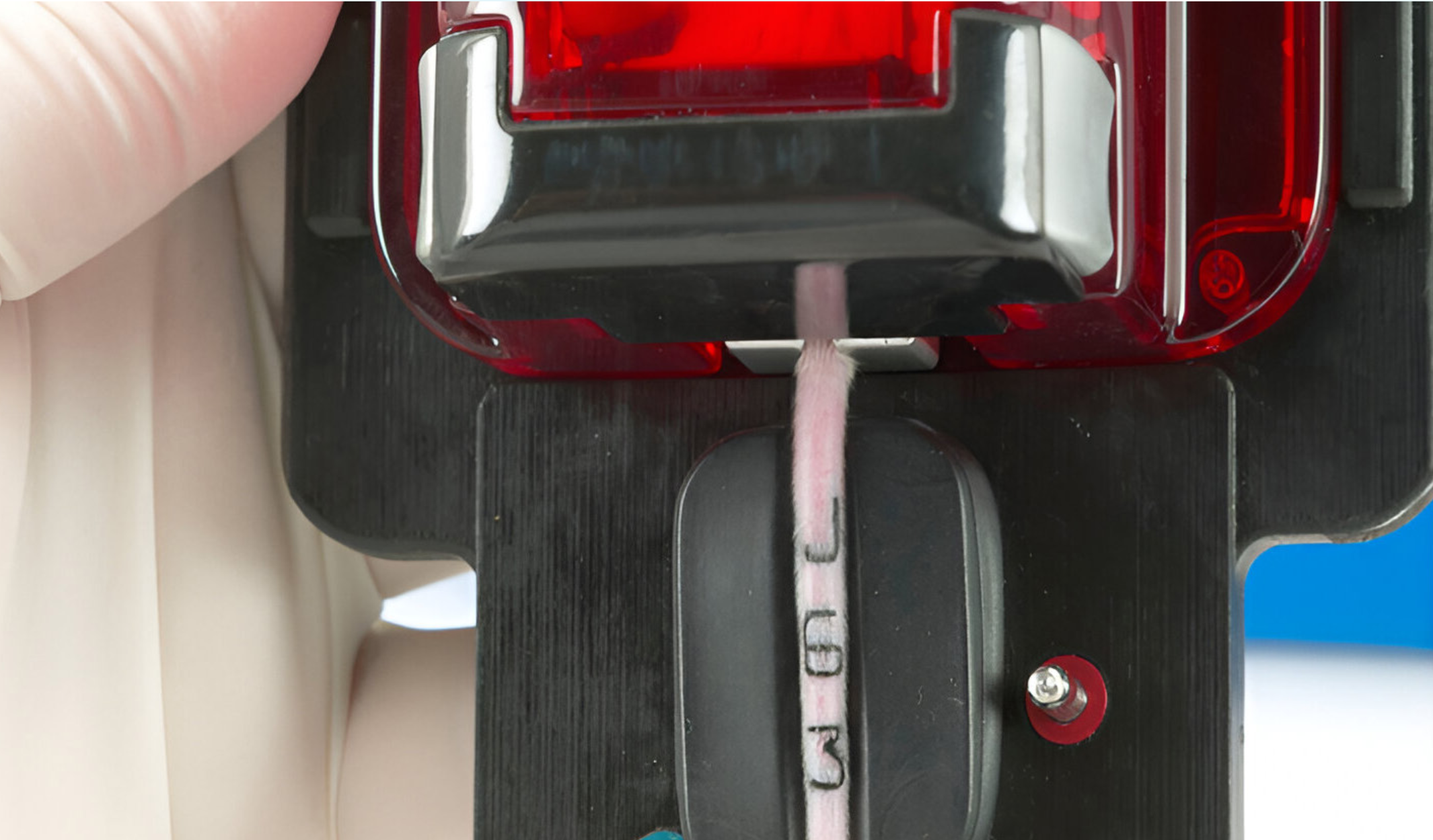
APPLICATIONS
RFID Tags VS Tail Tattoos
COMPARISON
Mouse identification: RFID Tags vs. Tail Tattoos
In the preclinical research arena, accurate identification of laboratory mice is crucial for compliance with regulatory protocols and for gathering comprehensive data necessary for preclinical research studies.
In recent years RFID (Radio Frequency Identification) tags and tail tattoos have emerged as new innovative animal identification solutions, each offering their own distinct advantages in enhancing animal welfare, all whilst ensuring the integrity of the data collected, especially when compared to more traditional methods.
Choosing the right method for your research
At Somark we are committed to working with the industry to enhance the efficiency of the pre-clinical research arena. Recognizing that human error is one of the biggest contributors to failed (human) clinical trials, often stemming from errors during the initial animal-based phase.
These issues can typically evolve from the permanency of the chosen method, with marker pen and ear punching both posing threats to accurate identification over time. Pen can wear off and the ear holes can often tear.
As a result, the methods of RFID tags and tail tattooing have become more popular options for seeking approval of in vivo research studies. Both enhance data integrity and reliability of research outcomes, but how do you know which is the right method for your institute?
Practical implementation of identification methods
When selecting an identification method, researchers should consider factors such as the nature of the study, the available resources, and the specific welfare requirements of the animals involved. For instance, if a study involves a large sample of mice where individual tracking is critical, Digitail may be the most effective choice with an infinite number of unique mouse ID’s available.
RFID Tags: enhancing mouse welfare
RFID tags are lightweight, minimally-invasive, and can be easily scanned without the need for physical contact with the animal, through both glass and plastic enclosures . This eliminates the stress associated with traditional tagging methods, allowing for more accurate behavioral assessments and better overall welfare. Unlike ear tags, RFID tags like Digitail, do not interfere with a mouse’s natural behaviors, ensuring that their wellbeing is prioritized throughout the study.
In addition to being prioritizing animal welfare, RFID tags enhance data integrity. They allow for seamless tracking without the risk of misidentification or lost tags. This accuracy is crucial for generating reliable data, especially in long-term studies where even minor discrepancies can impact results.
Key considerations for RFID tags
Efficiency: RFID tags, such as Digitail allow for quick and automated identification of subjects, using a digital portable reader, helping to reduce the time researchers spend manually checking IDs, by an average of 49% compared to ear notching. This efficiency not only streamlines workflows but also enhances overall productivity in research settings.
Accuracy: RFID tags minimize human error, ensuring precise identification of each mouse throughout the study. This accuracy is critical for maintaining the integrity of research data.
Data integration: RFID tags can be integrated within existing laboratory systems, or as a standalone Somark technology ecosystem, allowing for seamless updates and retrieval of information.
Minimally invasive: The Digitail RFID tag is easy to implant by even novice technicians, and can be injected subcutaneously directly into the base of the tail, with little to no pain experienced by the mouse, significantly reducing the stress caused compared to other traditional identification methods.
Longevity: RFID tags are designed to last the lifespan of the animal, without the risk of tag migration, ensuring consistent identification throughout the research period.

Tail tattoos: A time-tested alternative
For researchers looking for a reliable identification method, tail tattoos represent another effective solution. This technique involves applying a 3 alpha-numeric characters permanently in the form of a tattoo on the tail of the mouse. Tail tattoos, like Labstamp were developed by Somark to help mitigate age-old problems experienced with alternative identification methods such as; no tissue trauma, no displaced ear tags, or need to treat dermatitis, or worry about auricular chondritis.
Tail tattoos are quick to apply, causing minimal distress to the subjects. The process takes less than 30 seconds and can be conducted with the aid of Somark’s patented safety restraint to reduce handling stress. By moving identification to the tail, researchers can avoid the complications tied to ear-based methods, all while maintaining high standards of animal welfare.
Key considerations for tail tattoos
Visibility: Tail tattoos are easily seen and can be read quickly, even from a distance, which is beneficial in large studies.
Durability: Tattoos last for the animal’s lifetime, reducing the risk of lost identification.
Minimally-invasive: Applying a tail tattoo using a system such as Labstamp requires minimal training and offers a fast and efficient process for identifying laboratory mice, minimizing the impact on the animal, aligning with the principles of the 3Rs.
Increased productivity: Labstamp’s efficiency can enhance overall productivity and streamline your processes. Offering 78% faster identification than ear notches and 27% faster identification than metal ear tags, improving your overall productivity.

The combined power of RFID tags and tail tattoos
For researchers who are undertaking longitudinal studies, using a combined approach of both RFID tags and tail tattoos can significantly enhance the reliability of your lab animal identification solution. Not only will this double the security of your animal IDs, ensuring data accuracy, but it will also simplify the data validation process. It’s especially valuable in large cohorts, where the risk of misidentification is higher.
Key considerations for a combined approach
Redundancy and reliability: Using both methods adds an extra layer of security. If one method fails, or malfunctions, the other still provides a reliable means of identification, minimizing the risk of data loss due to misidentification.
Easier troubleshooting in studies: For studies with multiple animals, having both forms of identification can be beneficial if there is ever a discrepancy in data or tagging issues arise. The dual approach allows cross-referencing to quickly confirm individual identities.
Regulatory compliance and data integrity: Many preclinical studies, especially those subject to regulatory oversight, require strict verification of animal identities. Having dual identification methods helps ensure data integrity and can satisfy more stringent regulatory requirements.

A modern approach to animal identification
Throughout a research study, meticulous data collection for each mouse is critical. Traditional identification methods like ear tags can raise significant welfare concerns and may compromise the quality of research data. Both RFID tags and tail tattoos offer a more humane and efficient alternative, eliminating the risks associated with invasive tagging methods.
The use of less invasive applications of identification both minimizes stress, as a result of a significantly reduced need for animal handling during the application and the ongoing reading of identifiers. This approach helps preserve the scientific integrity of preclinical studies.
Choose wisely for your research
When planning a preclinical study, it is essential to consider the implications of your identification method on both animal welfare and data quality. By opting for RFID tags or tail tattoos, researchers can mitigate the risks associated with traditional ear tags, ensuring a more humane and effective approach to lab animal identification.
If you’d like to learn more about implementing RFID technology or tail tattooing in your research, please get in contact, our team of experts is here to help you.
